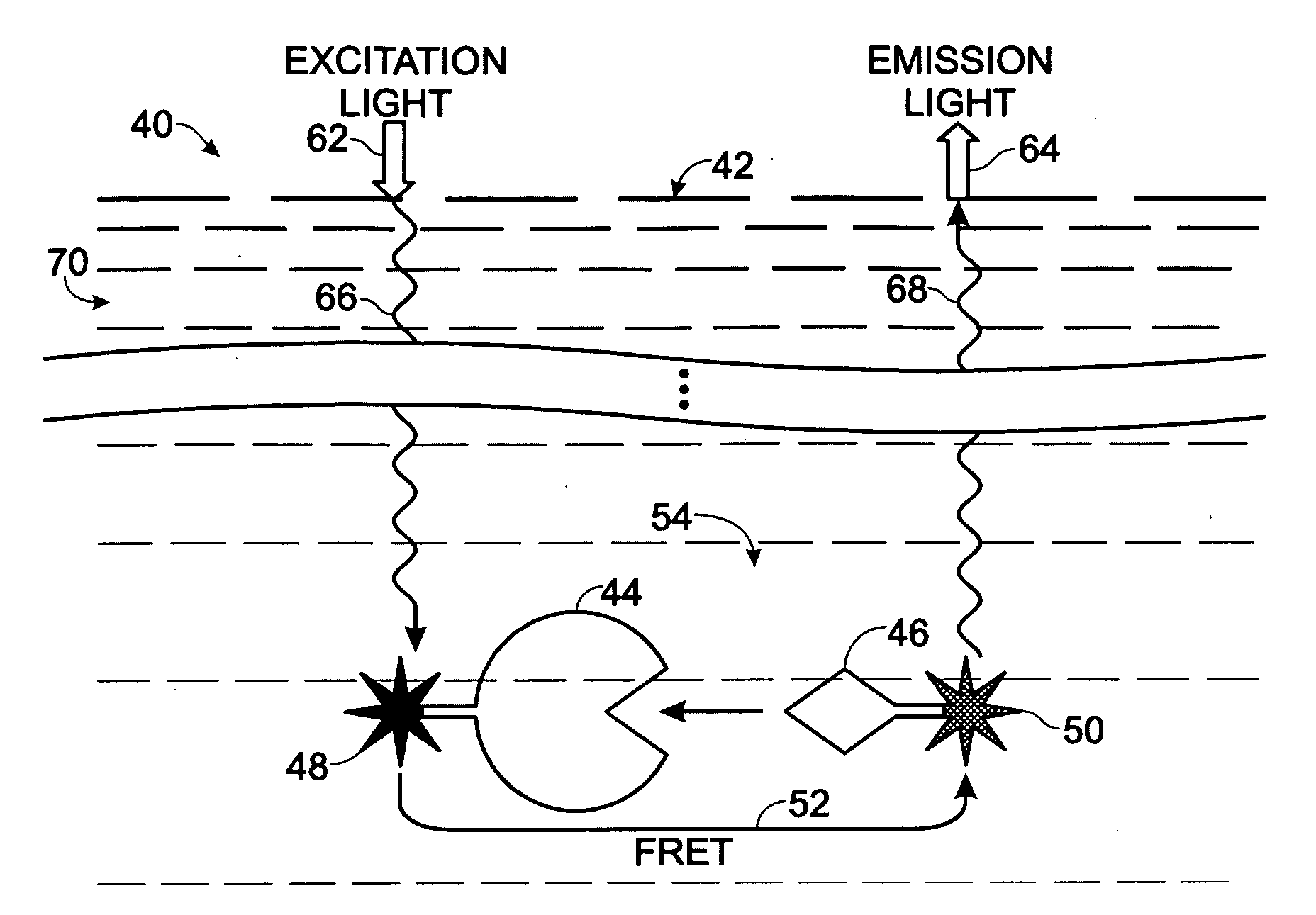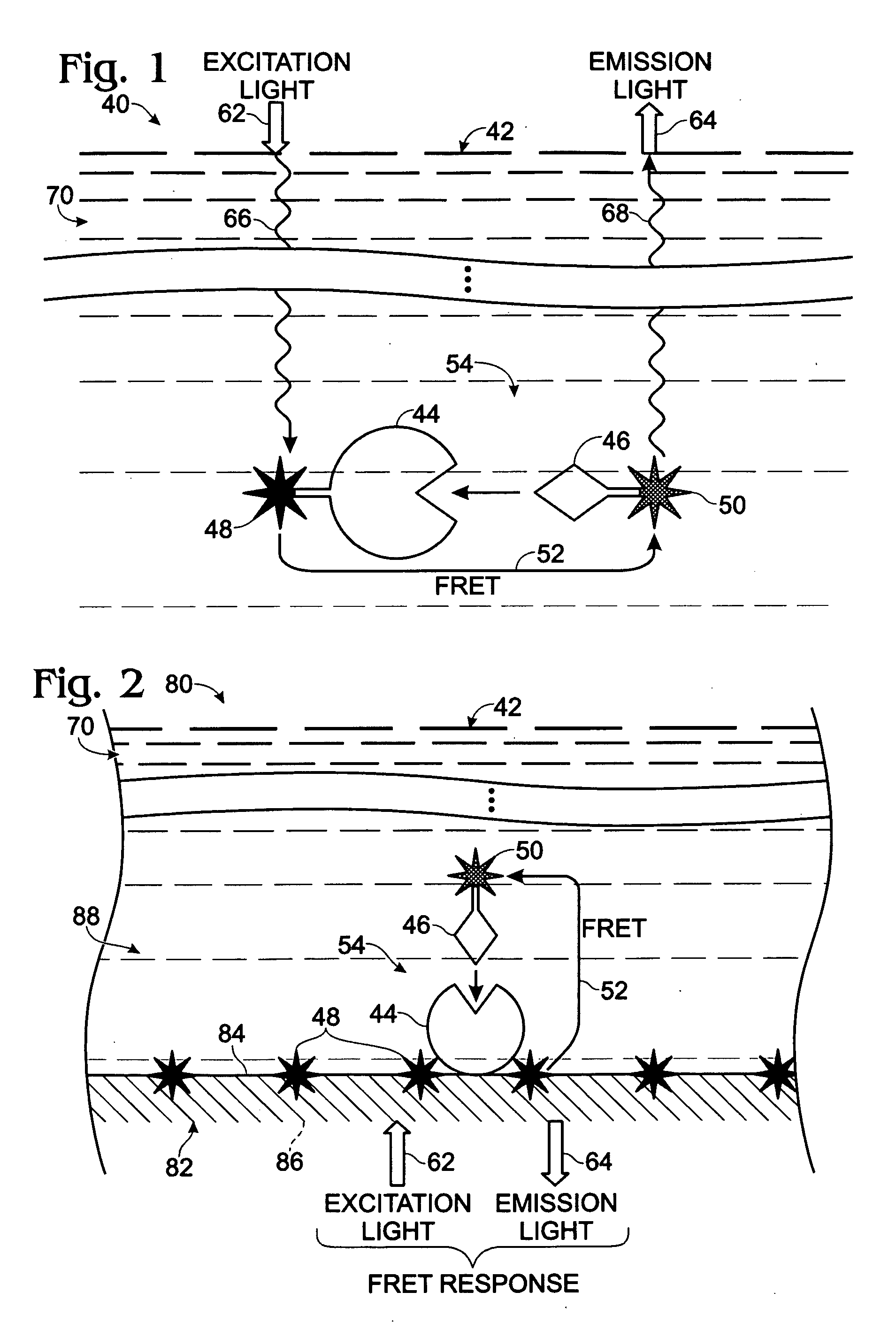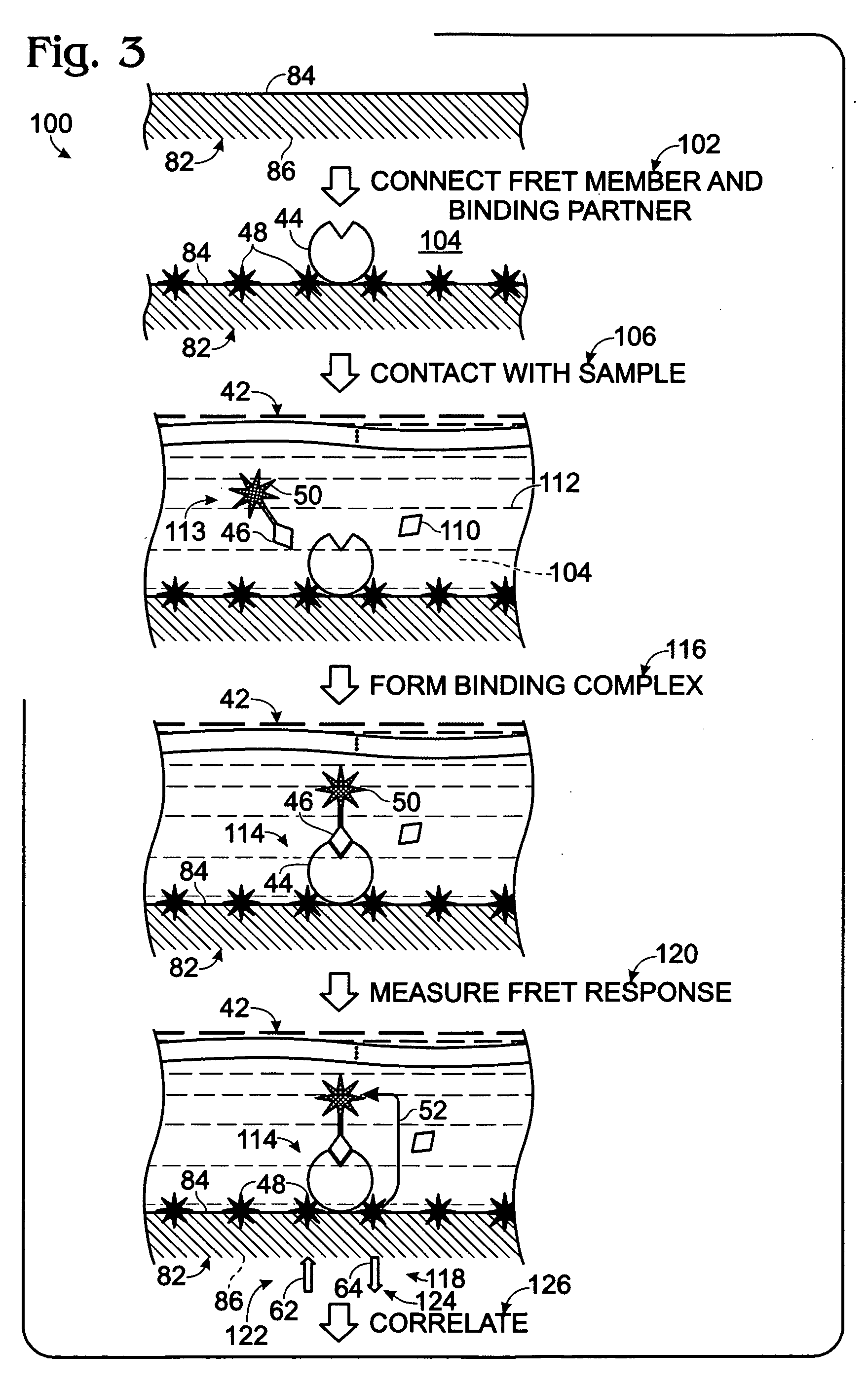Fluorescence Resonance Energy Transfer Assay Based on Modified Solid Surface
a technology of fluorescence resonance and solid surface, which is applied in the direction of scientific instruments, measurement devices, instruments, etc., can solve the problems of high background variability, homogenous fret assays, and the capacity of substances in the assay solution
- Summary
- Abstract
- Description
- Claims
- Application Information
AI Technical Summary
Benefits of technology
Problems solved by technology
Method used
Image
Examples
example 1
Entrapment of a Fluorophore in a Microplate
[0112]This Example describes an exemplary method of forming a microplate having a member of a FRET pair entrapped by the bottom wall of microplate wells to provide a modified upper surface of the bottom wall in each well for FRET binding assays; see FIG. 15. More particularly, this example demonstrates the feasibility of using a lanthanide chelate solution formed in an organic solvent for well treatment in the preparation of a microplate, or other plastic solid support, with a modified microplate surface that contains a member of a FRET pair, such as a fluorophore or a quencher.
A. Materials
[0113]Microplates used are as follows: Corning 96-well clear acrylic plates with half area (catalog number 3679).
[0114]Reagents used are as follows: 1-(2-naphthoyl)-3,3,3-trifluoroacetone (NTA) from Sigma-Aldrich (catalog number 343633), and europium chloride hexahydrate (EuCl3.H2O) from Sigma-Aldrich (catalog number 212881).
[0115]The instrument for fluor...
example 2
FRET Assays with an Entrapped Fluorophore
[0120]This Example describes exemplary FRET binding assays performed with modified microplates generated according to the procedure of Example 1; see FIGS. 16 and 17. One or more of the potential advantages of the novel assay technology disclosed herein are also demonstrated, such as an ability to reduce optical interference from an exemplary colored compound, namely, phenol red, disposed in samples. Phenol red is a commonly used pH indicator for cell culture and thus may occur frequently in biological samples.
A. Materials
[0121]Microplates used are as follows: Corning 96-well clear acrylic plates are treated with europium chelate according to Example 1, to produce modified microplates with wells having a surface modified by a fluorophore (the europium chelate).
[0122]Reagents used are as follows: bovine serum albumin (BSA) and biotin-labeled bovine serum albumin (biotin-BSA) are obtained from Sigma, and allophycocyanin-labeled streptavidin (st...
example 3
Incorporation of a Fluorophore into a Polystyrene Microplate
[0129]This Example describes exemplary methods of forming a microplate having a member of a FRET pair entrapped by the bottom wall of wells of the microplate, to provide a modified upper surface on the bottom wall in each well for FRET binding assays; see FIG. 18. More particularly, this Example demonstrates the feasibility of using organic solvent treatment in the preparation of a polystyrene microplate with a modified plate surface that contains a member of a FRET pair, such as a fluorophore or a quencher. However, the use of an organic solvent to connect a FRET member to a microplate surface may be applied to any suitable solid support formed of plastic or other solvent-sensitive material.
[0130]Examples 1 and 2 use acrylic-based plates to demonstrate the feasibility of preparing microplates with fluorescent surfaces for the FRET assays disclosed herein. However, the microplates commonly used in biochemical assays may be ...
PUM
| Property | Measurement | Unit |
|---|---|---|
| fluorescence lifetime | aaaaa | aaaaa |
| distance | aaaaa | aaaaa |
| atomic numbers | aaaaa | aaaaa |
Abstract
Description
Claims
Application Information
 Login to View More
Login to View More - R&D
- Intellectual Property
- Life Sciences
- Materials
- Tech Scout
- Unparalleled Data Quality
- Higher Quality Content
- 60% Fewer Hallucinations
Browse by: Latest US Patents, China's latest patents, Technical Efficacy Thesaurus, Application Domain, Technology Topic, Popular Technical Reports.
© 2025 PatSnap. All rights reserved.Legal|Privacy policy|Modern Slavery Act Transparency Statement|Sitemap|About US| Contact US: help@patsnap.com



